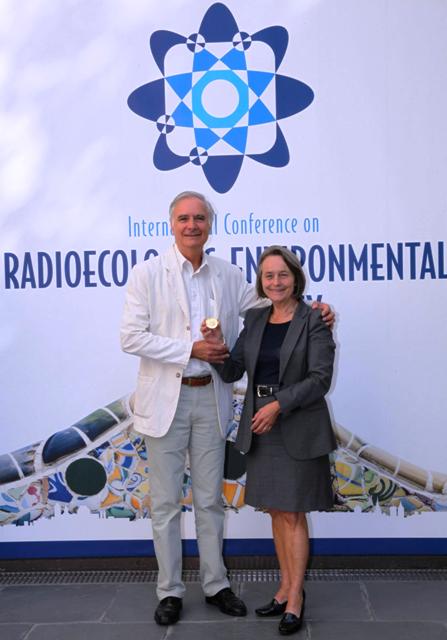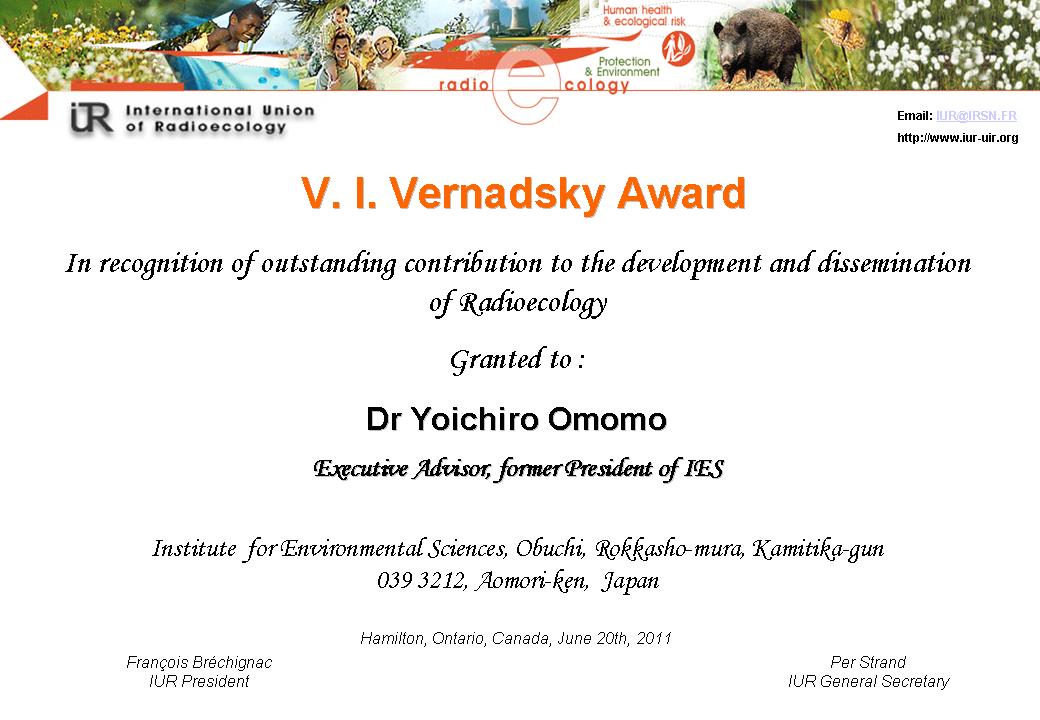IUR Awards
Two different categories of awards have been created to recognize the quality of research and communications in radioecology. They are awarded during International Conferences.
The V. I. Vernadsky Award honors the lifetime contribution of a man or woman to enriching radioecology science. The award is granted in remembrance of Prof. Dr. V.I. Vernadsky, who pioneered modern ecology concepts and radioecology. He established and managed major national and international research programs that were fundamental for the emergence of the radiecology field.
The IUR Yound Investigator Award gives the opportunity during International Conferences to highlight the work of young researchers, selected for both the scientific quality and the interest of the scientific information
V. I. Vernadsky Award
|
Radioecology and modern ecology: A common foundation due to Vladimir Ivanovitch VERNADSKY |
Rewarded in recognition of outstanding contribution to the development and dissemination of Radioecology:
|
6th IUR V.I. Vernadsky Award 2020 Oslo, Norway |
Prof Dr. Hildegarde Vandenhove, Belgium Prof Dr. Hildegarde Vandenhove is Institute Director Environment Health |
 |
|
5th IUR V.I. Vernadsky Award 2017 Berlin, Germany |
Prof. Dr. Rudolf ALEXAKHIN, Russia Prof. Dr. Rudolf ALEXAKHIN was (he passed away on 2 May 2018) Member of the Russian Academy of Sciences, Scientific Supervisor of the Russian Institute of Agricultural Radiology and AgroEcology (RIARAE), Obninsk, Russia |
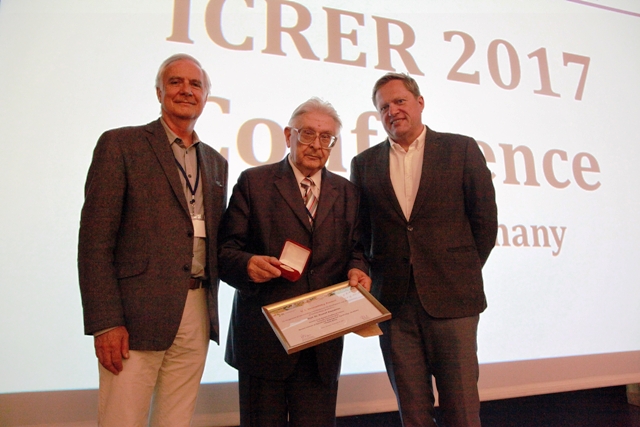 |
|
4th IUR V.I. Vernadsky Award 2014 Barcelona, Spain |
Prof Dr. Philos. Brit SALBU is Director CERAD CoE Centre for Environmental RadioactivityHead, Isotope Laboratory Head, Section Environmental Chemistry,Department of Environmental Sciences, Norwegian University of Life Sciences, Norway
|
|
|
3rd IUR V.I. Vernadsky Award 2011 Hamilton, Canada |
Dr. Yoichiro OMONO, Japan Dr. Yoichiro OMONO is Executive Advisor, Former President of Institute for Environmental Sciences (IES), Aomori, Japan |
|
|
2nd IUR V.I. Vernadsky Award 2008 Bergen, Norway |
Prof. Gennady POLIKARPOV, Ukraine A.O. Kovalevsky Institute of Biology of Southern Seas, IBSS, |
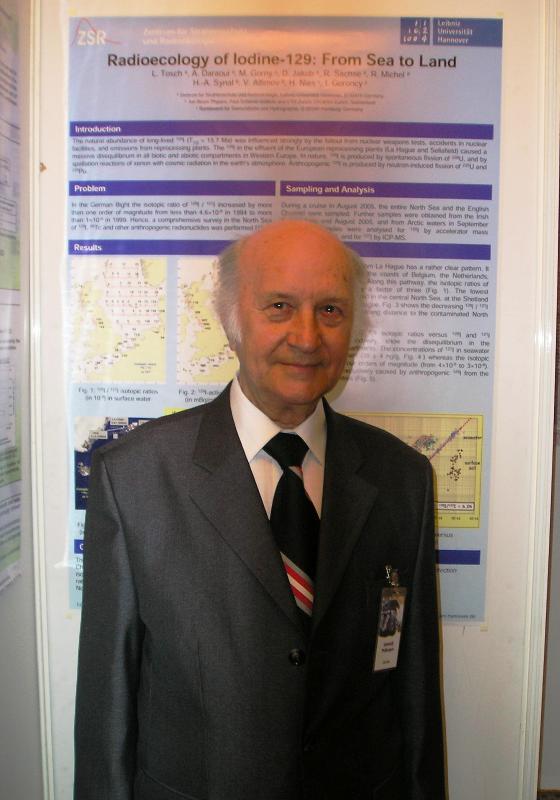 |
|
1st IUR V.I. Vernadsky Award 2005 Nice, France |
Prof. Ward WHICKER, USA Department of Environmental and Radiological Health Sciences |
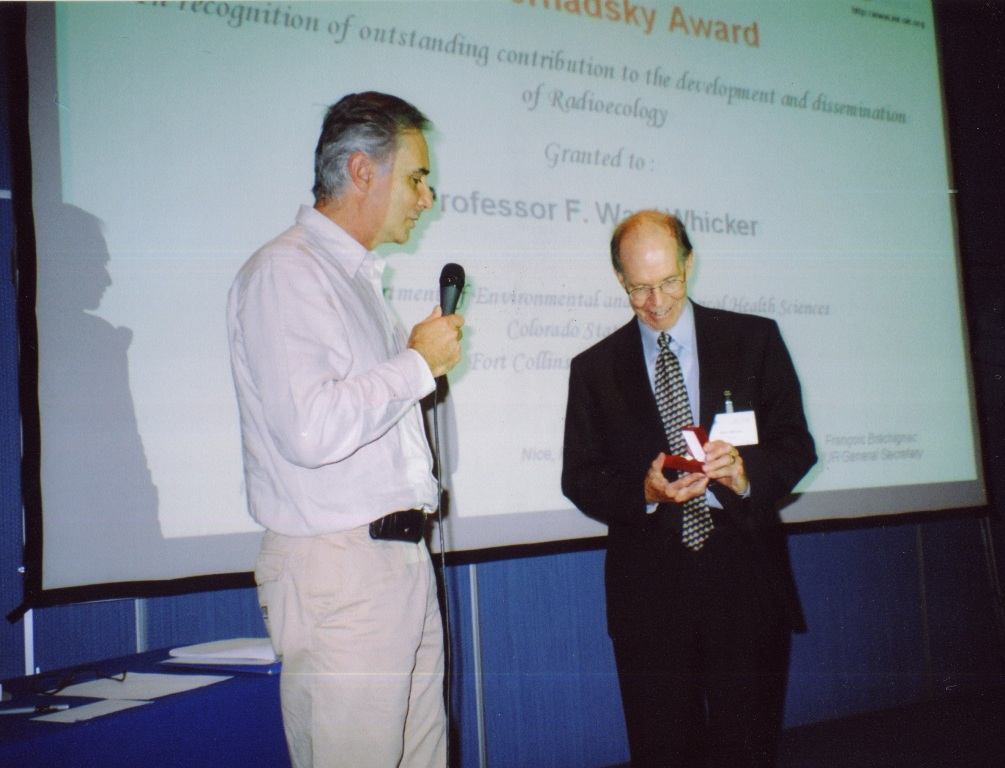 |
IUR Young Investigator Award
Rewarded for the scientific quality and the presentation of the radioecology research :
2020, Oslo, Norway
Javnjuk Andrian, Ukraine
Sarah Donaher, USA
Sam Hancock, Canada
Jingjing Wang, China
2017, Berlin, Germany
Christina Ganzha
Department of Aquatic Radioecology, Institute of Hydrobiology of the NAS of Ukraine
Geroyev, Kyiv, Ukraine
Adrian Iavniuk
Department of Freshwater Radioecology, Institute of Hydrobiology of the National Academy of
Sciences of Ukraine (NASU), Kyiv, Ukraine
Dawn Montgomery
Department of Environmental Engineering and Earth Science, Clemson University, South Carolina, USA
Aramrun Phakphum
School of Environment & Life Sciences, University of Salford, Manchester, UK
Polina Yu. Volkova
Laboratory of radiobiology and ecotoxicology of plants, Russian Institute of Radiology and Agroecology, Obninsk, Russia

2014, Barcelona, Spain
On the occasion of the ICRER 2014 Conference, three young researchers have been granted the IUR Young Investigator Award for the outstanding quality of their research work and reporting at the conference. The awardees were:
- Nicole E. Martinez, USA, Comparison of computational models for estimation of whole body and organ radiation dose in rainbow trout from uptake of iodine-131
- Kyo Kitayama, Japan, Temporal change in the 137Cs concentration ratio between coarse and fine particles in Fukushima
- Polina Y. Volkova, Russia, Genetic variability in chronic irradiated plant populations

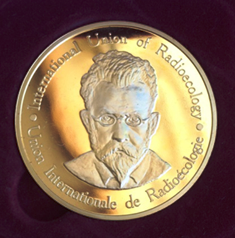 The famous natural scientist Vladimir Ivanovich Vernadsky was at the origin of new concepts in ecology, and a founder of the theory on the biosphere. As one of the founders of radioecology, the establishment of the IUR medal (Gold Medal) named after this scientist is quite justified and a rational solution stimulating creative activity in the world community of radioecologists.
The famous natural scientist Vladimir Ivanovich Vernadsky was at the origin of new concepts in ecology, and a founder of the theory on the biosphere. As one of the founders of radioecology, the establishment of the IUR medal (Gold Medal) named after this scientist is quite justified and a rational solution stimulating creative activity in the world community of radioecologists.